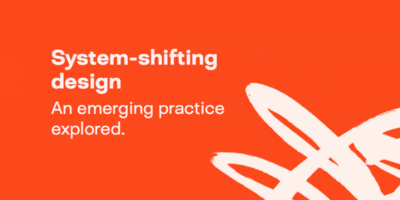University of Aberdeen

In 2010, the World Health Organisation calculated the global economic cost of mental illness as US $2.5tn a year, with 5% of adults worldwide suffering from the most serious forms of psychiatric disorders. Brain scans and DNA techniques have failed to produce biomarkers suitable for diagnosing individual patients, and when patients’ symptoms and behaviour do not meet criteria, it can take years to then diagnose them.
In 2012, researchers at the University of Aberdeen approached Design Council with a new piece of eye scanning technology which could recognise abnormalities unique to specific mental illnesses.
The eye test, called SaccScan, can distinguish between schizophrenia, bipolar disorder and major depression in more than 95% of cases. The test is non-invasive, fast, cheap and can be administered with minimal training.
Challenge
The researchers at University of Aberdeen had progressed the SaccScan technology to proof of concept stage. However, in order to attract external interest and potential investors, they needed to develop the user interface and consider usability of the whole system.
It was also essential to develop the technology in the context of the hospital environment and consider how to train and instruct non-technical users operating the product.
Design was so important to us at the outset to make sure we had the right package.
Dr Philip Benson, Lead researcher
What we did
Design Associate Ian Ferris facilitated thinking around the approaches to be used in aiding stakeholder engagement and the testing of both the branding and user experiences of the equipment in the context of the hospital environment.
Our support also extended to mapping the future of the technology and potential applications of emerging technologies in imaging, data transmission and mobile devices.
Design support contributed to the development of a non-technical, user-friendly interface, consistent branding and articulation, as well as design of the instruction manuals and diagnostic reports.
Working with Ian Ferris opened our eyes to a number of relevant design aspects. We’ve been able to demonstrate that we’re actively thinking about these issues when fundraising, accessing pots to contribute to these areas. This is very important, and helps us to make our informed case.
Dr Philip Benson, Lead researcher
Results
SACCADE Diagnostics has now spun out from the University of Aberdeen. It has raised considerable investment for further development and to gain CE regulatory approval, the mandatory conformity marking for products sold, manufactured or designed within the European Economic Area.
Drawing on the lessons from Design Council support, the team are now applying for funding to conduct focus groups with potential users as part of an ongoing participatory design programme to further develop the technology.
Marketing materials are being designed by Edinburgh-based MortonWard. The team at SACCADE Diagnostics now feel more able to articulate the effectiveness of their technology and engage potential partners.
The greater visibility resulting from these activities led to an English healthcare trust approaching them to help with clinical validation work, joining NHS Grampian, who will lead field trials.
Subscribe to our newsletter
Want to keep up with the latest from the Design Council?

